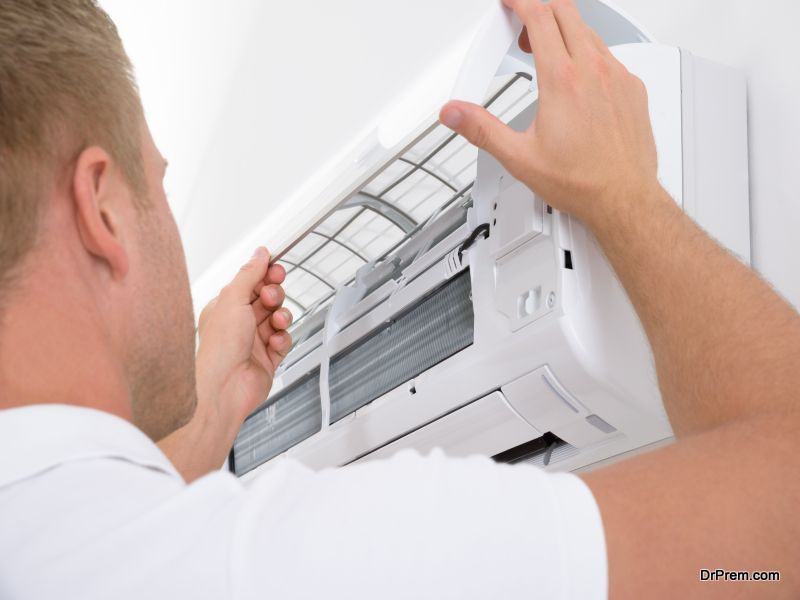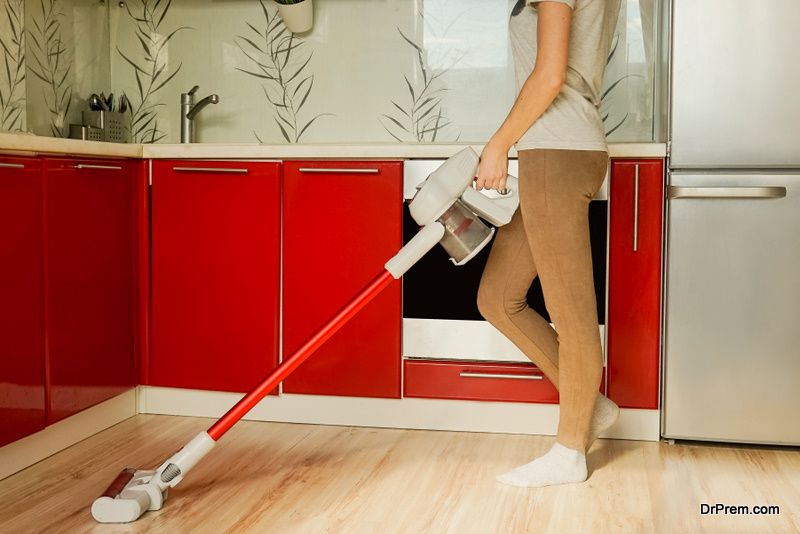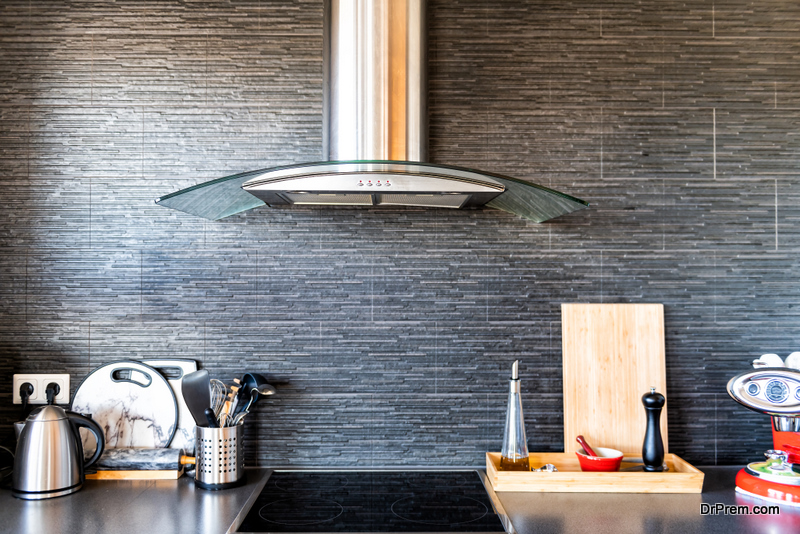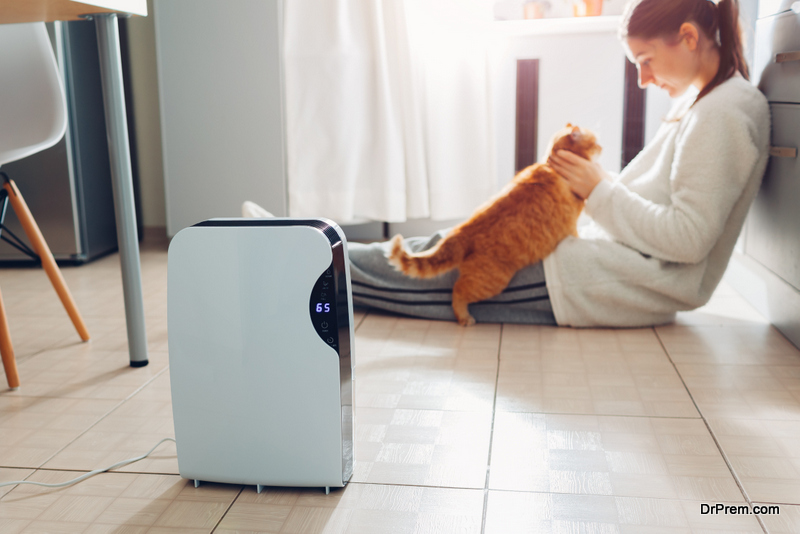Proper ventilation should be an integral part of any building design, regardless of whether it’s a commercial office apartment building, or a residential home. People spend their time indoors almost 90% of their lives. When staying inside your home, you must have excellent air indoor quality to keep you healthy, comfortable, and productive. On the other hand, poor indoor air quality and evident air pollution can put your health at risk.
With this in mind, here are six tips and ways to improve the air quality and reduce air pollution inside your home:
1. Clean Your AC Filter Regularly… and Eventually Change Them
 Having an air conditioner at home is advantageous in keeping you and your family cozy all-year round. It keeps indoor air temperature at excellent levels. Moreover, did you know that air conditioners can also filter out indoor air pollutants? You’ll notice that ACs have large, good quality filters that help in eliminating dust and dirt particles lingering in the air.
Having an air conditioner at home is advantageous in keeping you and your family cozy all-year round. It keeps indoor air temperature at excellent levels. Moreover, did you know that air conditioners can also filter out indoor air pollutants? You’ll notice that ACs have large, good quality filters that help in eliminating dust and dirt particles lingering in the air.
Over time, these filters get filled with dirt particles, that’s why you should clean your air filter at least once every two weeks. Keeping them clean minimizes the risks of damaging the entire AC, reducing repair costs in the long run. Eventually, your AC filters will be worn out, thus the need for a filter change.
2. Invest In An Air Purifier
Many homeowners aren’t aware of how indoor air pollution can be worse than outdoor ones. The Environmental Protection Agency (EPA) highlighted that indoor air can be as five times more polluted than outdoor air. To reduce indoor pollution in no time, visit Enviroinc.com to find out more about different air purifiers available on the market.
Through using an air purifier in your home, you can achieve the following results:
- Remove harmful chemicals and pollutants in the air
- Alleviate symptoms of asthma
- Eliminate unpleasant odors
- Enhance sleep quality
- Reduce risks of contracting airborne diseases
3. Make Vacuuming and Cleaning A Habit
 A clean home is a healthy home. Despite spending on your air conditioner and purifier, you can’t achieve good indoor air quality if your household isn’t even clean to start with. Therefore, make sure to clean and vacuum your home regularly, especially your carpets, rugs, and drapes, as well as high-traffic areas. If possible, avoid sweeping the floors because they can just stir up more dirt and dust.
A clean home is a healthy home. Despite spending on your air conditioner and purifier, you can’t achieve good indoor air quality if your household isn’t even clean to start with. Therefore, make sure to clean and vacuum your home regularly, especially your carpets, rugs, and drapes, as well as high-traffic areas. If possible, avoid sweeping the floors because they can just stir up more dirt and dust.
Home professionals recommend that you should vacuum your home at least twice a week, and more often if you have pets at home, or family members with respiratory or skin problems. Also, conduct regular cleaning because dust can gather in your furniture, decorations, and other items.
4. Maintain Optimal Humidity
Finding the right level of humidity is important for one’s comfort. Extremely low humidity can cause respiratory problems, while high humidity allows various microorganisms such as bacteria to thrive. Your home should always maintain the humidity of 30% to 50% to avoid these issues, as well as maintain good air quality inside your home.
If your air is too dry or has low humidity, the simplest solution is to use a humidifier. If the problem seems temporary, there are cheaper solutions available like hang-drying wet clothes inside the house until low humidity is solved.
On the other hand, you can invest in a dehumidifier if your humidity is too high. As the name implies, a dehumidifier absorbs water from the air. Air conditioners can also help in dehumidifying your home.
5. Utilize A Cooking Vent In Your Kitchen
 Unknown to many homeowners, most of the pollutants indoors are coming from their kitchens. During preparation and cooking of food, appliances such as stoves, electric burners, toasters, and deep fryers release pollutants including nitrogen dioxide, carbon monoxide, particulate matter, and volatile organic compounds (VOCs). Eventually, these pollutants can potentially be absorbed by your bloodstream.
Unknown to many homeowners, most of the pollutants indoors are coming from their kitchens. During preparation and cooking of food, appliances such as stoves, electric burners, toasters, and deep fryers release pollutants including nitrogen dioxide, carbon monoxide, particulate matter, and volatile organic compounds (VOCs). Eventually, these pollutants can potentially be absorbed by your bloodstream.
To remove these harmful compounds while cooking, you can make use of a cooking vent or hood installed near your cooking appliances. Cooking vents help in eliminating pollutants that get into your air. Alternatively, you can also install an exhaust fan to keep the polluted air from staying indoors for too long.
6. Don’t Smoke Indoors
Another highly polluting agent that poses great risk to your indoor air quality is the second-hand smoke released by cigarettes. If someone is smoking indoors, chances are, the smoke will linger in the air for a long period of time. They can even stick to your couch, curtains, and clothes. More importantly, inhaling second-hand smoke is dangerous to you and your family’s health.
Takeaways
A ventilation system should be included as part of your design when constructing or remodeling your home. Proper home ventilation has many benefits that makes it a worthy investment. In additional, you shouldn’t rely solely on this and as a homeowner, invest your time, money, and effort in doing the tips discussed to enhance the air quality inside your home.
Article Submitted By Community Writer




